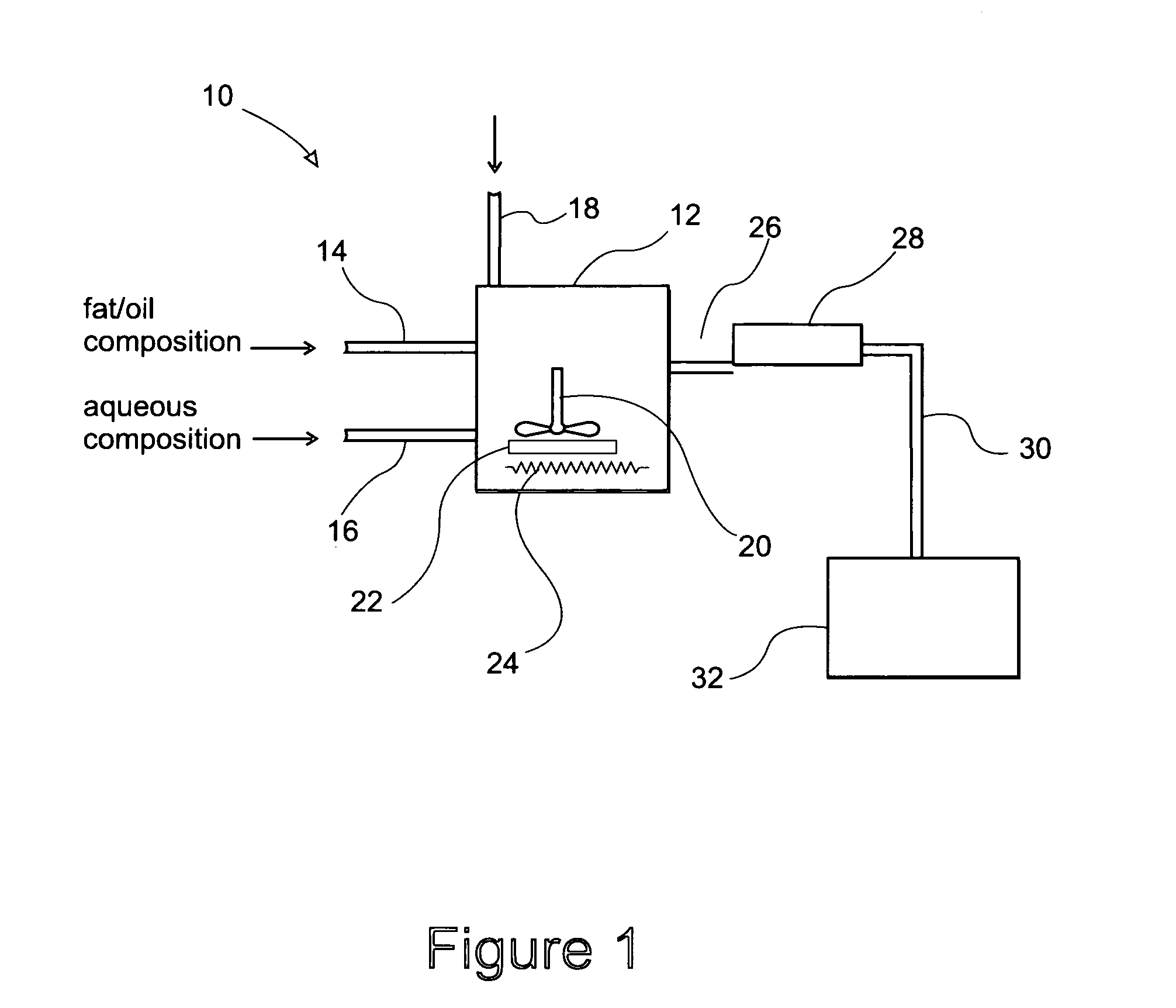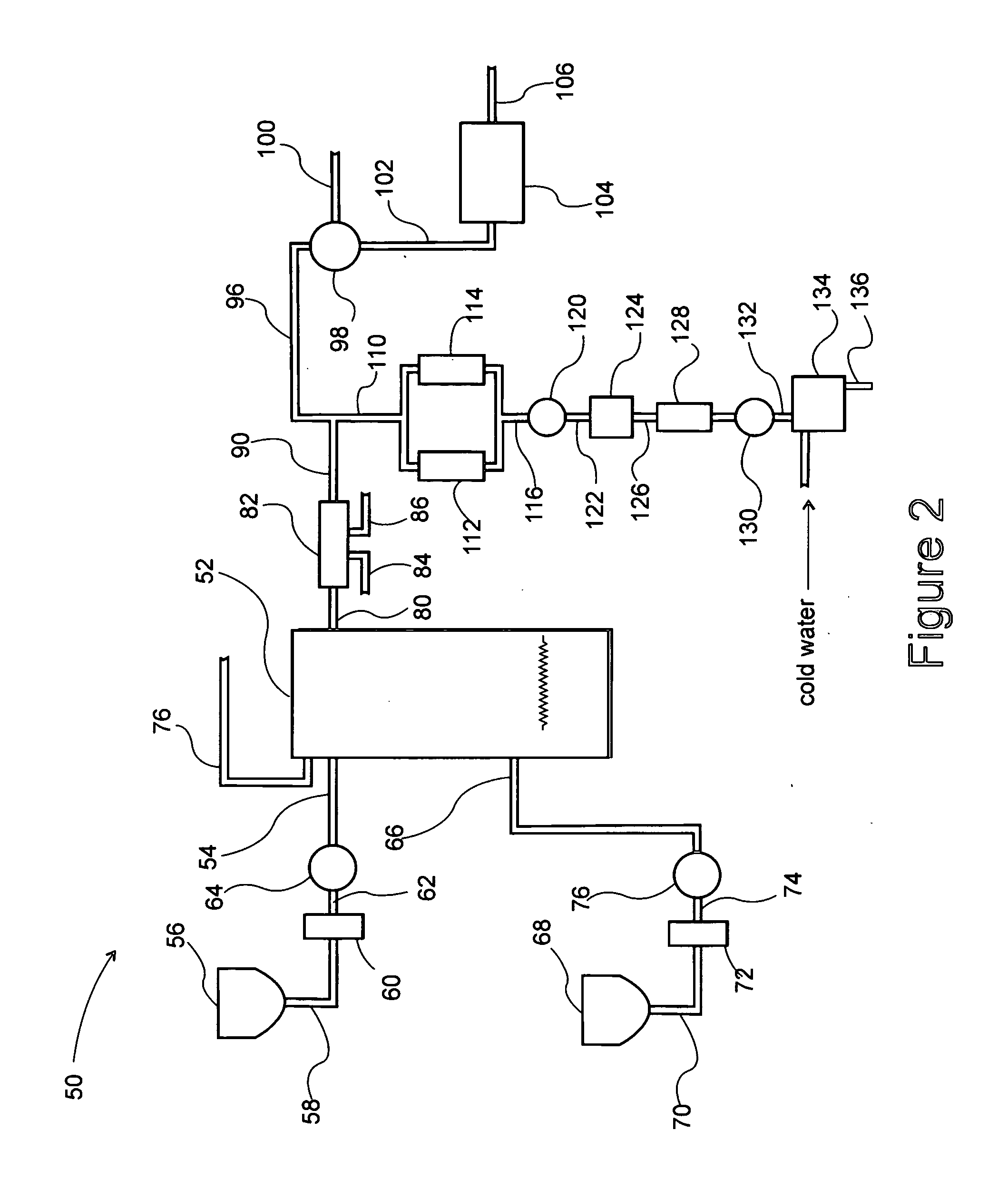Continuous thermal process for flavor preparation
a technology of flavor composition and thermal process, which is applied in the field of flavor composition formation process, can solve the problems of limited feedstock to a single oil-based phase, many prior art methods are difficult to implement, and the flavor generated in such a way typically does not have enough strength to be used as flavorings for other food preparations
- Summary
- Abstract
- Description
- Claims
- Application Information
AI Technical Summary
Benefits of technology
Problems solved by technology
Method used
Image
Examples
example 1
[0027]An aqueous reactant solution is prepared by dissolving L-cysteine and D-xylose in diluted liquid soy sauce at the following percentages: 4.5% L-cysteine, 6.7% D-xylose, 22.2% liquid soy sauce, and 66.6% water. A modified thin film evaporator is heated to about 300° F. A stream of sunflower oil is introduced into the thin film evaporator at 30 lb / hr while the aqueous solution prepared above is introduced into the processor at 5.3 lb / hr. The ratio of the oil / aqueous solution is kept at 85 / 15. The mixture is mixed vigorously with a scrap surface mixer at a speed of at least 300 rpm to form a film on the inner surface of the thin film evaporator. The mixture is reacted for about 2 minutes before exiting the thin film evaporator. The liquid flavor is then cooled through a serial of jacketed cooling tubes to 160° F. Sensory evaluation of 0.25% of the flavor in 0.5% salt solution reveals that the flavor has a good balance of savory, chicken and slightly roasted sesame characteristics...
example 2
[0028]A stream of vegetable oil is introduced into a modified thin film evaporator at 35 lb / hr and heated to about 680° F. for 20 sec to 1 minute with or without the addition of air. The liquid is then cooled to 200° F. The resultant oil possesses fatty, charbroil flavor characteristics.
example 3
[0029]A stream of aqueous flavor precursor system is fed into a modified thin film evaporator at 21 lb / hr. With the mixer running at 300 rpm, the precursor system is heated to 250° F. for about 2 minutes. The mixture consists of L-proline 5.10% L-cysteine 1.19% L-methionine 0.34% D-ribose 1.19% Glycerol 15.00% Water 77.18%, After the process, the resultant mixture is then cooled to 160° F. and collected. The resultant product has a strong beefy, brothy and vegetable flavor characteristic.
PUM
 Login to View More
Login to View More Abstract
Description
Claims
Application Information
 Login to View More
Login to View More - R&D
- Intellectual Property
- Life Sciences
- Materials
- Tech Scout
- Unparalleled Data Quality
- Higher Quality Content
- 60% Fewer Hallucinations
Browse by: Latest US Patents, China's latest patents, Technical Efficacy Thesaurus, Application Domain, Technology Topic, Popular Technical Reports.
© 2025 PatSnap. All rights reserved.Legal|Privacy policy|Modern Slavery Act Transparency Statement|Sitemap|About US| Contact US: help@patsnap.com



